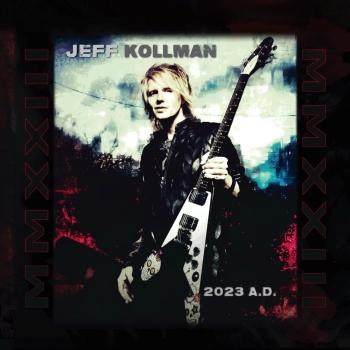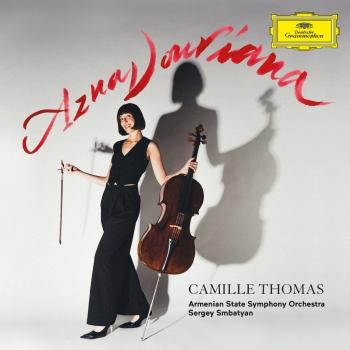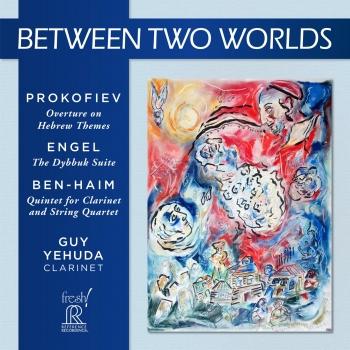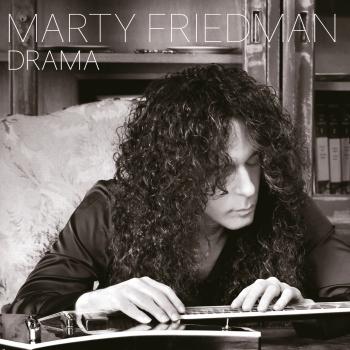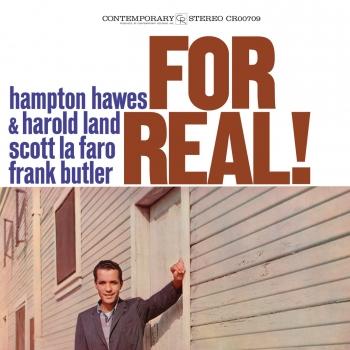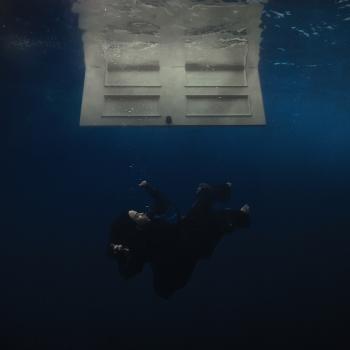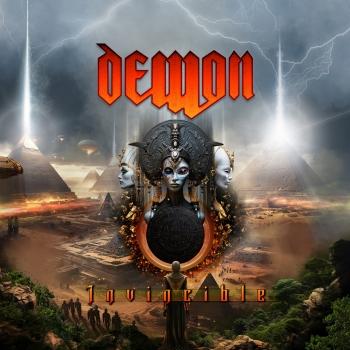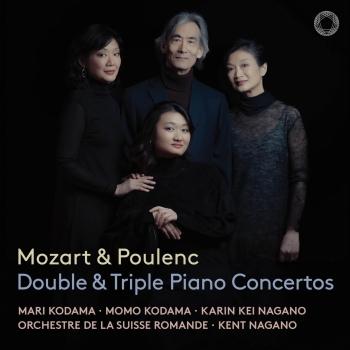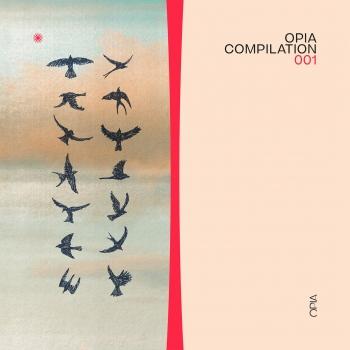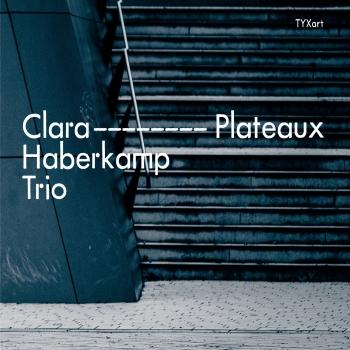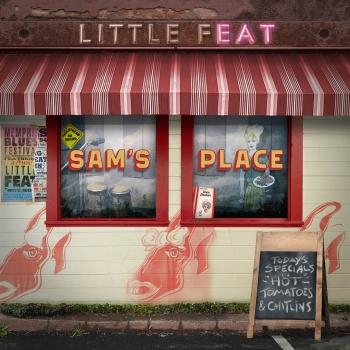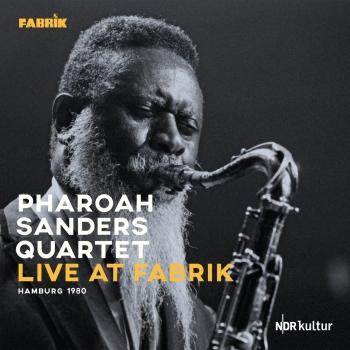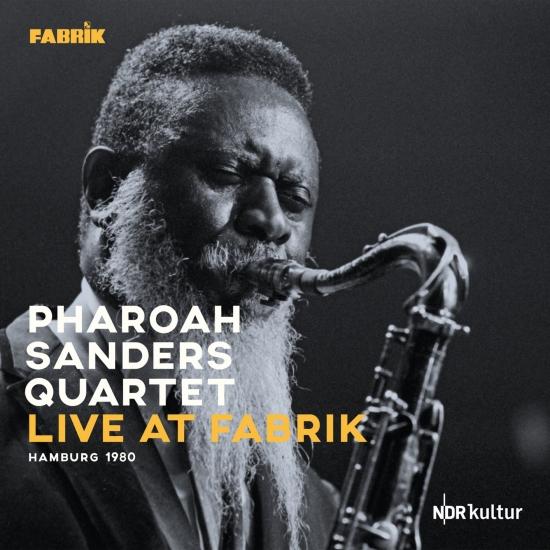
Live at Fabrik Hamburg 1980 (Live) Pharoah Sanders
Album info
Album-Release:
2022
HRA-Release:
24.03.2023
Album including Album cover
- 1You Gotta Have Freedom (Live)18:03
- 2It's Easy To Remember (Live)12:57
- 3Dr Pitt (Live)20:20
- 4The Creator Has A Masterplan (Live)08:35
- 5Greetings To Idris (Live)10:22
Info for Live at Fabrik Hamburg 1980 (Live)
This release in a series of live recordings of concerts from the Fabrik in Hamburg-Altona, one of those hidden treasures from the archive of the NDR, was intended to bring back the memory of changes and revolutions in the world of jazz of more than four decades ago. It has now turned into an obituary - at the end of September 2022 the tenor saxophonist Pharoah Sanders passed away at the age of 81. This recording of the Sanders Quartet from 6 June 1980 is so far the oldest from the Fabrik, predating the great jazz-epoch of the venue. An era, which even today Thomas Engel, the first program planner of the Fabrik, describes as a very special period for popular and not-so-popular culture in Hamburg and far beyond. Furthermore, this concert formed part of the then fifth edition of what was still called the New Jazz Festival, a summit of German, European and US-American musicians. Only thanks to the NDR Bigband, top-class jazz was performed at the old industrial site on Barnerstrasse in Altona at all. In the mid-1970s, the band was brave enough to leave its familiar recording studio and perform rousing concerts at the Fabrik. Since 1976, the New Jazz Festival organised by Wolfgang Kunert, the program planner of the big band, institutionalised jazz music at this exceptional location.
Pharoah Sanders, tenor saxophone
John Hicks, piano
Curtis Lundy, bass
Idris Muhammad, drums
Digitally remastered
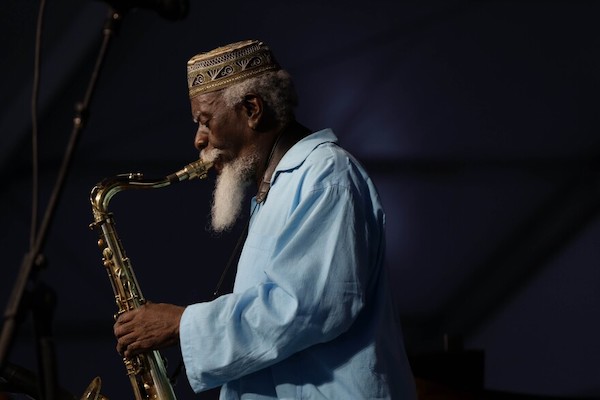
Pharoah Sanders
possesses one of the most distinctive tenor saxophone sounds in jazz. Harmonically rich and heavy with overtones, Sanders’ sound can be as raw and abrasive as it is possible for a saxophonist to produce. Yet, Sanders is highly regarded to the point of reverence by a great many jazz fans. Although he made his name with expressionistic, nearly anarchic free jazz in John Coltrane’s late ensembles of the mid-’60s, Sanders’ later music is guided by more graceful concerns.
The hallmarks of Sanders’ playing at that time were naked aggression and unrestrained passion. In the years after Coltrane’s death, however, Sanders explored other, somewhat gentler and perhaps more cerebral avenues — without, it should be added, sacrificing any of the intensity that defined his work as an apprentice to Coltrane.
Pharoah Sanders (his given name, Ferrell Sanders) was born into a musical family. Sanders’ early favorites included Harold Land, James Moody, Sonny Rollins, Charlie Parker, and John Coltrane. Known in the San Francisco Bay Area as “Little Rock,” Sanders soon began playing bebop, rhythm & blues, and free jazz with many of the region’s finest musicians, including fellow saxophonists Dewey Redman and Sonny Simmons, as well as pianist Ed Kelly and drummer Smiley Winters. In 1961, Sanders moved to New York, where he struggled. Unable to make a living with his music, Sanders took to pawning his horn, working non-musical jobs, and sometimes sleeping on the subway. During this period he played with a number of free jazz luminaries, including Sun Ra, Don Cherry, and Billy Higgins.
In 1964, Coltrane asked Sanders to sit in with his band. The following year, Sanders was playing regularly with the Coltrane group. Coltrane’s ensembles with Sanders were some of the most controversial in the history of jazz. Their music represents a near total desertion of traditional jazz concepts, like swing and functional harmony, in favor of a teeming, irregularly structured, organic mixture of sound for sound’s sake. Strength was a necessity in that band, and as Coltrane realized, Sanders had it in abundance.
Sanders made his first record as a leader in 1964. After John Coltrane’s death in 1967, Sanders worked briefly with his widow, Alice Coltrane. From the late ’60s, he worked primarily as a leader of his own ensembles.
In the decades after his first recordings with Coltrane, Sanders developed into a more well-rounded artist, capable of playing convincingly in a variety of contexts, from free to mainstream. Some of his best work is his most accessible. As a mature artist, Sanders discovered a hard-edged lyricism that has served him well.
This album contains no booklet.

